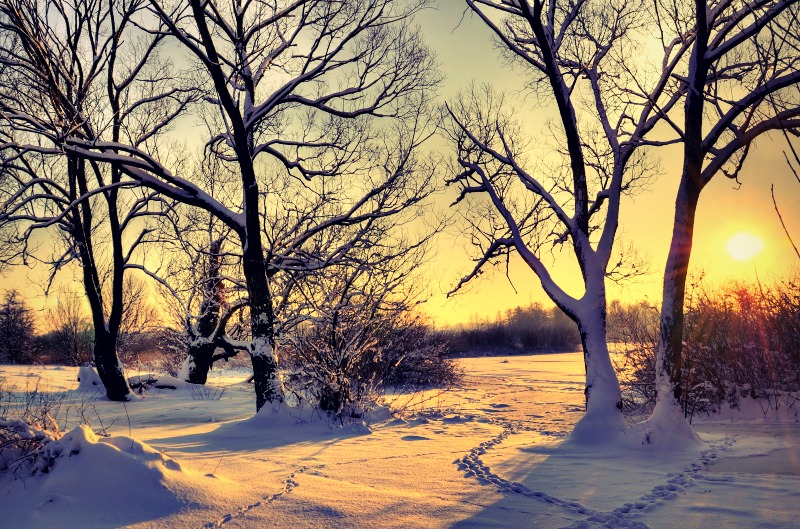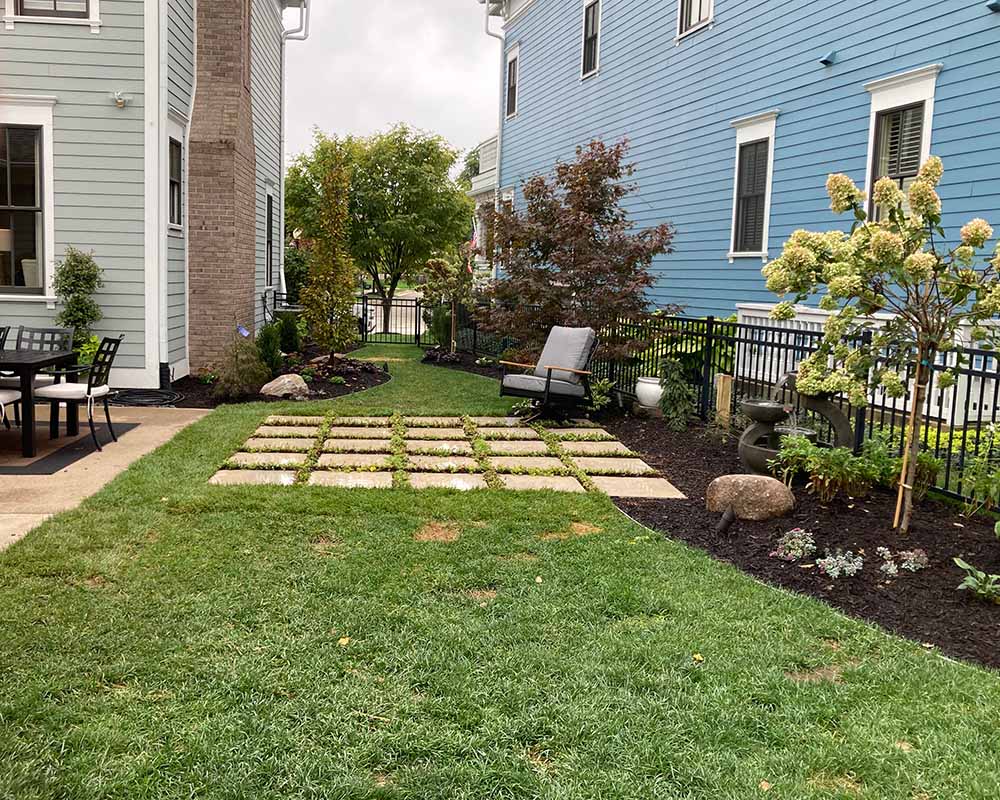While we can snuggle up inside during winter, plants have to stick it out in the frigid weather. Thankfully, they have some amazing survival tricks up their green sleeves, and winter is when gardeners and landscapers do not have much to do outside. Generally, cold season landscape care is minimal as it mainly involves prepping your home for spring, making sure all old debris is gone and your plants will be ready to grow. But what is your landscape doing while you are holed up for the winter?
Perennial Plants
There are a multitude of factors in play that cause the seasonal changes in plants, making thorough explanations long and complicated. To put it in the simplest of ways, plants consist of mostly water, and when it gets cold, the water freezes, damaging the organism. To avoid this problem, trees and other perennials store up energy in the warm months, then enter a period of hibernation during winter, letting their vulnerable leaves die and storing water in their more sturdy wood stalks and trunks. Plants also go to sleep because they need a period of recuperation and rest from their energy-storing activities. You could say plants are similar to landscapers in that way—they work hard when it is warm, then sleep and relax when it is too cold.
Why then are evergreens always awake? Great question! Evergreens have a coating over their needles or leaves that help insulate and protect them from freezing temperatures. This layer is called cutin and acts like the blubber found in animals. In addition to this nice warm cocoon, evergreen needles also minimize the danger of freezing. Notice how much smaller needles are than the big, flashy leaves of deciduous trees. This design means there is less water in needles and less surface area for cold temperatures to effect. Genius! Evergreens can keep doing their photosynthesis thing all winter since they are insulated and safe.
Indiana Winters and False Springs
Indiana winters vary greatly from year to year. It can be tempting to plant trees, shrubs, perennials, etc. that do well with a milder winter, like plants in neighboring zones. However, we do not recommend planting marginal plants here. They will die eventually, maybe next year, maybe in 10 years, and it is not worth the investment. Indiana is in Zone 5 on the USDA’s Plant Hardiness Zone Map, and we strongly advise that when buying new plants, you check to see if they are suitable for Zone 5 or lower. Even Zone 6 is marginal in Indiana, and the vast majority will not survive if planted here. Indiana weather in general, summer or winter, is super variant, which is hard on plants. This year, we have seen the effects of the past few years’ crazy weather manifest in many trees, particularly maples.
Part of this weather variation is false spring. A false spring is when Indiana decides it wants to be warm for about a week or so, and the plants say “OMG, IT’S SPRING, YAY!” and begin to swell their buds. Then Indiana laughs, turns the thermostat way back down, and the poor landscapers and plants all get hurt by the cold temperatures. New growth sadly is very susceptible to a freeze; flower buds are almost guaranteed to die. Yup, Indiana weather can be unkind.
Winter Landscape Care
Though there is not much gardening to do in winter, you can perform a little winter pruning and clean up leftover debris from your annuals. Pruning deciduous trees when they are asleep is a good idea as their sap flow is reduced, and there are not any threatening insect or disease issues during winter. However, pruning in the bitter cold is never a good idea (save yourself from frostbite), and evergreens are exempt from winter pruning as they will be damaged. It is always good to remove all leaf and plant debris as they can harbor insects and disease that will lay dormant in the dead leaves until spring, when they can wreak havoc.
During snowfall, make sure large drifts of snow do not build up on plants—the snow’s weight can break or damage them. To protect plants from a false spring or early frost, cover them with a towel, bucket, old bed sheet, or anything else that will work during the night. Just make sure to uncover the plant during the day—they still need sun!
We have written quite a bit about winter landscapes, and there is a lot to learn! Here, you can read more about winter pruning, using evergreens in your yard, and how to create a beautiful winter landscape. And of course do not forget about indoor gardening, a great pastime to assuage those winter blues.
Eagleson Landscape Company provides landscape and hardscape services in the Greater Indianapolis area, including Carmel, Zionsville, Westfield, Fishers and Geist.






